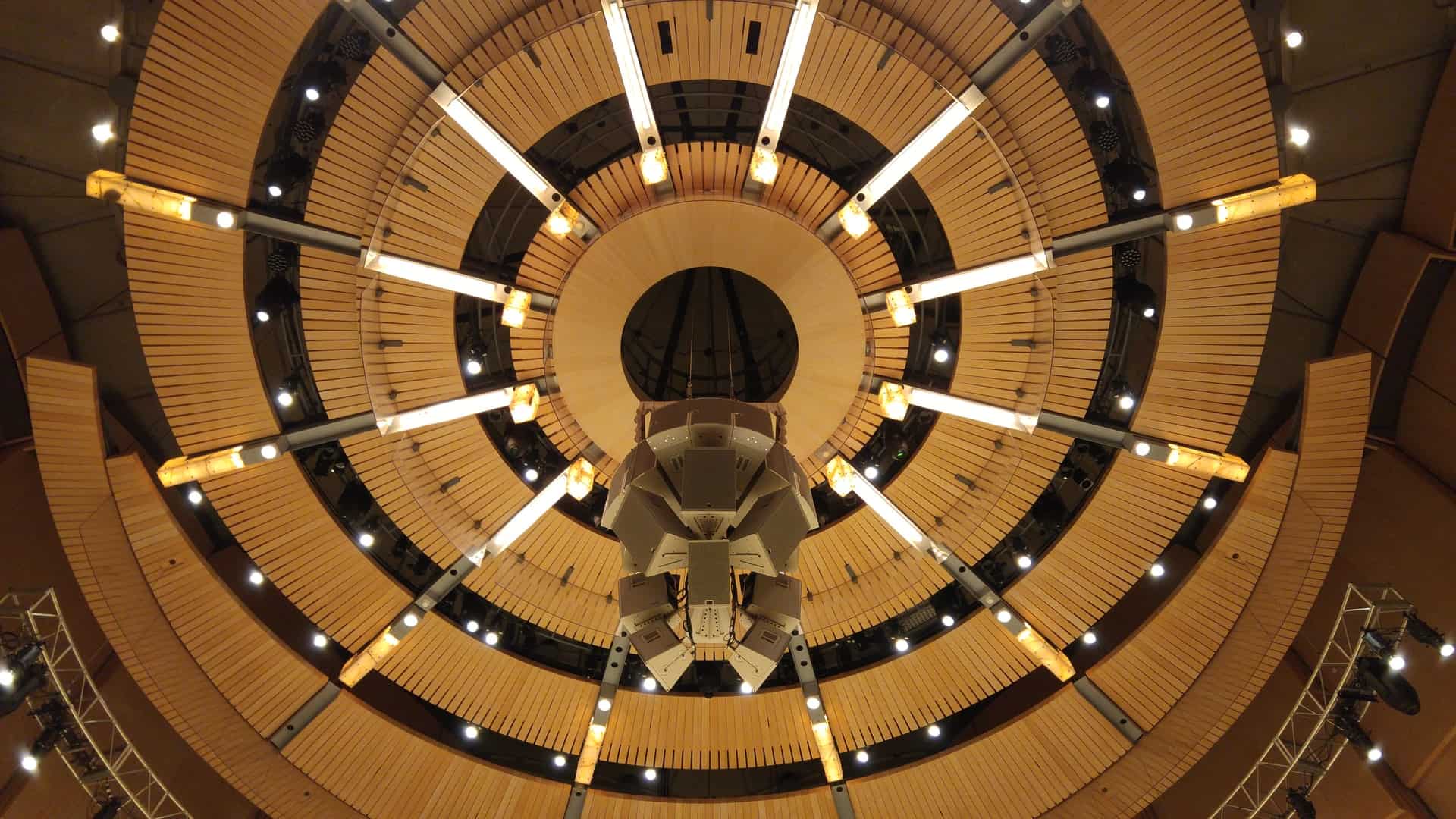
Looking Toward the Future of Acoustical Engineering
December 16, 2021 - Revolutionized Team
Revolutionized is reader-supported. When you buy through links on our site, we may earn an affiliate commission. Learn more here.
Humanity has come a long way since we first learned to record sounds on wax tubes that could be played back on phonographs. There’s a certain novelty to setting up one of these ancient music players and hearing what audio enthusiasts listened to in the late 1800s. However, it’s nothing compared to the advances we’ve made in the last few decades — or the ones ton the horizon. What are some of the most exciting acoustic engineering advances of the last decade, and what does the future of acoustical engineering look like?
Exploring the Subdisciplines of Acoustical Engineering
Acoustical engineering is the branch of engineering dealing with with sound and vibration. However, it breaks down further into a variety of subdisciplines that better describe the kind of work that these engineers do. Some of the most common subdisciplines of acoustical engineering include:
- Aeroacoustics — noise generated by the movement of air, often applies to wind instruments, aircraft and wind turbines.
- Audio Signal Processing — the science of manipulating audio signals with electronic means using both analog and digital processing.
- Architectural Acoustics — The science of achieving good sound or acoustics within a building. This discipline is essential in music halls and theaters but can also be necessary for homes and commercial buildings.
- Bioacoustics — Studying the science of sound production and hearing in animals. Bioacoustics engineers study the sounds that animals make, as well as the effect of manmade sounds on animals.
- Electroacoustics — This subdiscipline works with sound engineering, specifically the design of headphones, microphones, speakers and other tools for reproducing or recording sound.
- Environmental Acoustics — These engineers deal with and find solutions for noise pollution that can be caused by anything from traffic and aircraft to concerts or anything else that could be considered a nuisance sound.
- Musical Acoustics — As its name suggests, musical acoustics is the study of how music works, including everything from musical instruments to the human voice.
- Noise Control — Another subdiscipline that works alongside the environmental acoustics crew, working on reducing noise to protect individual hearing and preventing noise pollution.
- Psychoacoustics — A branch of acoustical engineering that focuses on how humans respond to sound, whether they’re listening to music that they enjoy or something unpleasant like nails on a chalkboard.
- Speech — The concept of speech — the production, processing, and perception — falls under the acoustical engineering umbrella. Those that specialize in speech work on everything from ensuring that voices are reproduced accurately to ensuring that things spoken are understood accurately.
- Ultrasonics — These soundwaves vibrate at too high a frequency to be heard by human ears, but they are valuable in medicine and underwater exploration, as a couple of examples. Fetal ultrasounds during pregnancy and the sonar used by submarines would both be examples of ultrasonics.
- Underwater Acoustics — The sonar mentioned above also falls into the underwater acoustics category. This subdiscipline studies how sound works underwater, both from manmade and natural sources.
- Vibration and Dynamics — Acoustical engineering isn’t all about audible sound. The vibration and dynamics subdiscipline explores the impact of vibration, from manmade sources and natural causes like earthquakes. This can be valuable for protecting human life, preventing architecture failure, and much more.
There is so much more to acoustical engineering than meets the eye. Moreover, the industry has changed dramatically over the last decade.
Recent Advances in Audio Engineering
What are some of the most exciting innovations in acoustical engineering in the last decade?
We’ve seen inflatable concert halls appear in the strangest locations. They give sound engineers the perfect canvas to create the ideal stage for musical acts. Once the building gets inflated and is ready to go, sound engineers can manipulate the interior acoustics like they would any other building.
3D impulse response management allows acoustic engineers to create a 3D visualization of the acoustics of a room, using a set of microphones. This makes it easier to spot problem areas that might be difficult to pinpoint with the human ear. It also eliminates potential disputes if sound engineers can’t agree on the root of problems.
On the opposite side of this, 3D sound technology enables sound engineers and musicians to create a truly immersive experience. They do this by recording in the center of a sphere of 64 microphones. This recording technology has value for architectural acoustics. Applications for gaming or even clinical uses may also exist.
Bringing augmented or virtual reality to the party adds the practice of acoustic holography. It enables engineers to create a picture of sound patterns in real-time. This could help engineers concerned with noise pollution and those trying to create the perfect acoustics for a musical performance or play.
What Does the Future of Acoustical Engineering Hold?
It’s exciting to look at how far the industry of acoustical engineering has come. But, it’s even more thrilling to imagine what the future might hold. What are acoustical engineers working to achieve?
Acoustic Metamaterials
Acoustic metamaterials are a bit of an unknown quantity. They work to completely absorb sound, creating something of an acoustic black hole. People may use them to modify the acoustics of a particularly problematic space. Acoustic metamaterials might even soundproof rooms or buildings more effectively than other options.
These materials have a unique niche in ensuring privacy. They absorb sound so effectively that someone in a metamaterial shielded space could have a conversation on speakerphone or listen to music without headphones without disturbing the person next to them. Acoustic metamaterials could also be invaluable tool for construction sites or areas of high noise pollution. Construction in densely populated areas pose challenges because because noise ordinances limit workable hours.
Gesture Control
Gestural control is another tool just beginning to emerge in acoustical engineering. It doesn’t yet mimic the display we’ve seen in science fiction. However, it doesn’t take much to set up a gestural control system with existing technology. Imagine a conductor directing the orchestra, controlling volume, acoustics and every other aspect of the performance. They could do that with nothing more than a wave of their hand.
3D Audio
3D and spherical audio have also shaken up the industry. They create immersive audio experiences to change how people experience music, movies, and other forms of audio engineering. Industry experts want to make immersive experiences with nothing more than a pair of over-the-ear headphones. These experts predict that by 2030, immersive 3D audio will be in every off-the-shelf audio device. Then, by 2040, these devices will surpass the best expensive equipment for audiophiles today. People should also expect more 3D audio recordings in future movies and music.
Music Recordings
Recording music in the massive studios used today will also become a thing of the past. As the transition from analog to digital is going to eliminate the need for mixing consoles and hardware that is considered normal today. In a way, it’s not unlike how spacecraft have evolved. The Apollo capsules and even the Space Shuttle were filled with switches and buttons — and accompanied by a massive instruction manual that the astronauts had to study and memorize to complete their missions. Today, the SpaceX Crew Dragon spacecraft basically flies itself, with controls on a touchscreen and those massive instruction manuals shrunk down to an iPad that gets strapped to the astronaut’s thigh.
Looking Back to Look Forward With Acoustical Engineering
Acoustical engineering might be a new term to many, but this brand of engineering is one that most people probably encounter on a daily basis. The future of acoustical engineering is looking bright, and within the next couple of decades, we’ll likely see a lot of changes that make it easier to immerse ourselves in the perfect audio experience.
Revolutionized is reader-supported. When you buy through links on our site, we may earn an affiliate commission. Learn more here.




